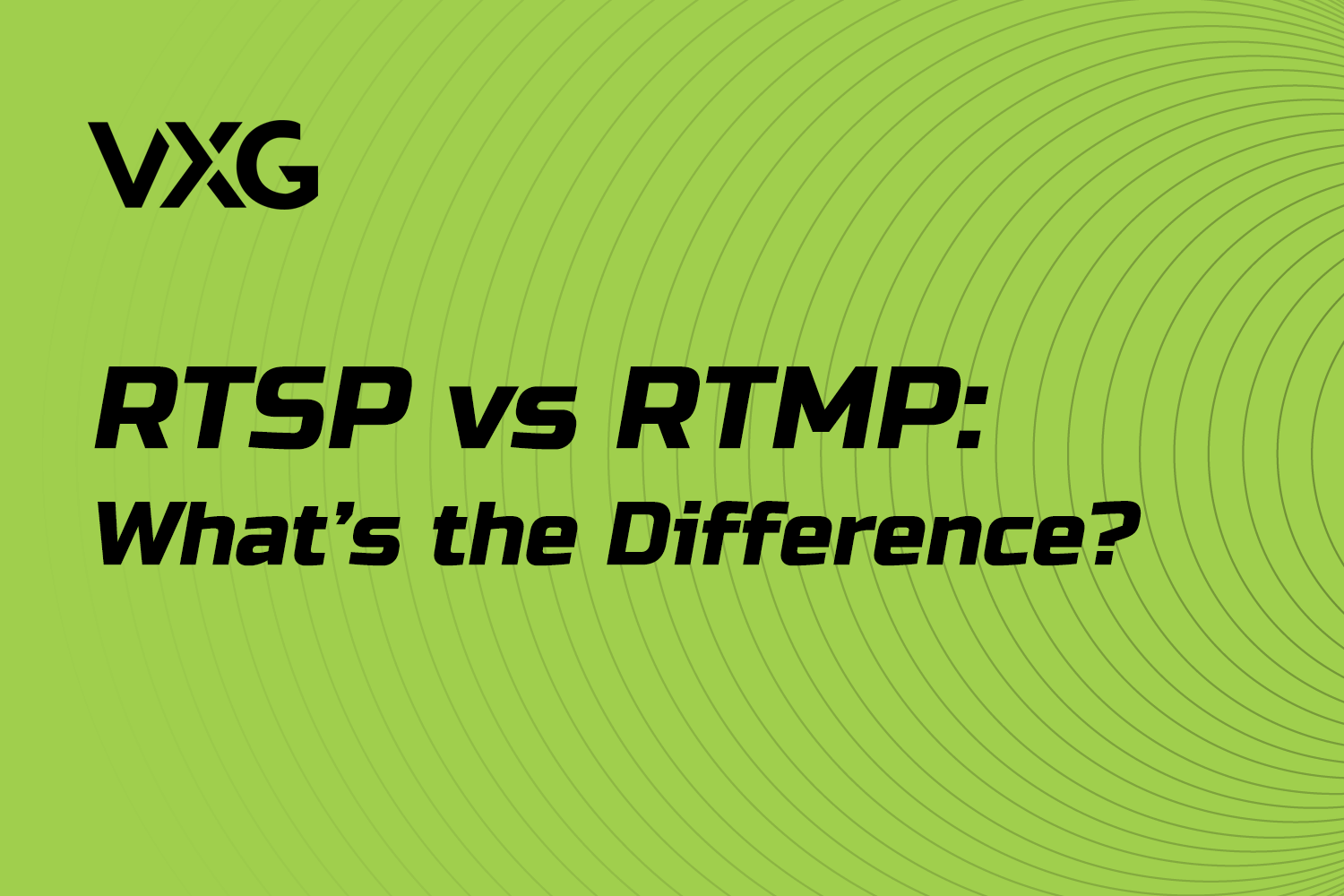RTSP vs RTMP: A Comparative Analysis of Streaming Protocols
 VXG
VXG
In the realm of streaming media, two protocols reign supreme: RTSP (Real-Time Streaming Protocol) and RTMP (Real-Time Messaging Protocol). Both protocols facilitate the delivery of live and on-demand media content over the Internet, enabling users to enjoy seamless audio and video experiences. However, despite their shared purpose, RTSP and RTMP exhibit distinct characteristics that cater to different streaming applications. This paper delves into a comprehensive comparison of these two protocols, elucidating their key differences, advantages, and suitability for specific use cases.
RTSP: Real-Time Streaming Protocol
RTSP, an open-standard protocol, excels in delivering live, low-latency streaming applications. It establishes a two-way communication channel between the streaming server and the client device, allowing for real-time control over the media stream. This enables features such as pausing, rewinding, and fast-forwarding, making it ideal for live broadcasting, surveillance systems, and interactive media experiences.
Key Advantages of RTSP:
Low Latency: RTSP prioritizes real-time delivery, minimizing delays between the source and the viewer.
Interactive Control: RTSP facilitates bidirectional communication, enabling playback control and server-side adjustments.
Adaptability: RTSP can adapt to varying network conditions, ensuring smooth streaming even in challenging environments.
Common Applications of RTSP:
Live Broadcasting: RTSP powers live streaming events, news broadcasts, and webinars.
Surveillance Systems: RTSP enables real-time monitoring of surveillance cameras and video feeds.
Interactive Media: RTSP supports interactive streaming applications, such as video conferencing and online gaming.
RTMP: Real-Time Messaging Protocol
RTMP, a proprietary protocol developed by Adobe, is widely used for high-quality streaming over the internet. It establishes a persistent connection between the encoder and the server, ensuring reliable and stable delivery. RTMP is also known for its compatibility with Flash Player, making it a popular choice for streaming to web browsers and mobile devices.
Key Advantages of RTMP:
High Quality: RTMP is optimized for delivering high-resolution video and audio content.
Wide Compatibility: RTMP is compatible with a broad range of streaming platforms and devices.
Reliability: RTMP's persistent connection ensures consistent and reliable delivery.
Common Applications of RTMP:
Live Broadcasting: RTMP is commonly used for live-streaming events, concerts, and sports broadcasts.
Video-on-Demand (VOD): RTMP powers VOD services, enabling users to stream pre-recorded content.
Social Media Streaming: RTMP is used for streaming live and pre-recorded content on social media platforms.
RTSP vs RTMP: A Comparative Table
| Feature | RTSP | RTMP |
| Protocol Type | Open Standard | Proprietary |
| Latency | Low Latency | Moderate Latency |
| Interactivity | High Interactivity | Limited Interactivity |
| Quality | High Quality | High Quality |
| Compatibility | Limited Compatibility | Wide Compatibility |
| Reliability | Moderate Reliability | High Reliability |
Choosing the Right Protocol
The choice between RTSP and RTMP depends on the specific requirements of the streaming application. For live, low-latency streaming applications, RTSP is the preferred choice. Its real-time control and low latency make it ideal for scenarios where immediate interaction and minimal delays are crucial. On the other hand, RTMP is better suited for high-quality streaming applications where reliability and compatibility are paramount. Its ability to deliver high-resolution content and its broad compatibility with streaming platforms make it a versatile choice for a wide range of use cases.
RTSP and RTMP stand as two pillars of streaming technology, each catering to distinct needs. RTSP excels in delivering real-time, interactive experiences, while RTMP shines in providing high-quality, reliable streaming. Understanding the strengths and limitations of each protocol empowers users to make informed decisions, ensuring that their streaming applications meet the demands of their specific requirements. As the world of streaming continues to evolve, RTSP and RTMP will undoubtedly remain at the forefront, facilitating seamless media delivery and enhancing the digital entertainment landscape.
Learn more: https://www.videoexpertsgroup.com/rtsp-vs-rtmp/
Subscribe to my newsletter
Read articles from VXG directly inside your inbox. Subscribe to the newsletter, and don't miss out.
Written by

VXG
VXG
VXG is a cloud video management software (VMS) platform designed to meet the specific needs of artificial intelligence (AI). It connects any cameras to any AI using its Cloud and on-premise components, providing smart cloud video surveillance and analytics companies with unlimited scalability, massive cost reduction, and extensive bandwidth saving.